Python development_python installation
May 07, 2025 pm 04:33 PMPython can run on a variety of platforms, including our common ones: Windows, Unix, Linux, and Macintosh.
This article will introduce in detail the process of installing Python in Windows operating system. My operating system is Windows 7, 32-bit version.
When installing Python, we can choose to install it from the source code or select the already compiled binary version for installation. I chose the latter here.
Step 1 Download the installation package
We download the Python installation package from the official Python website: http://m.miracleart.cn/link/50959eee56aa5f4695971b375b69354f .
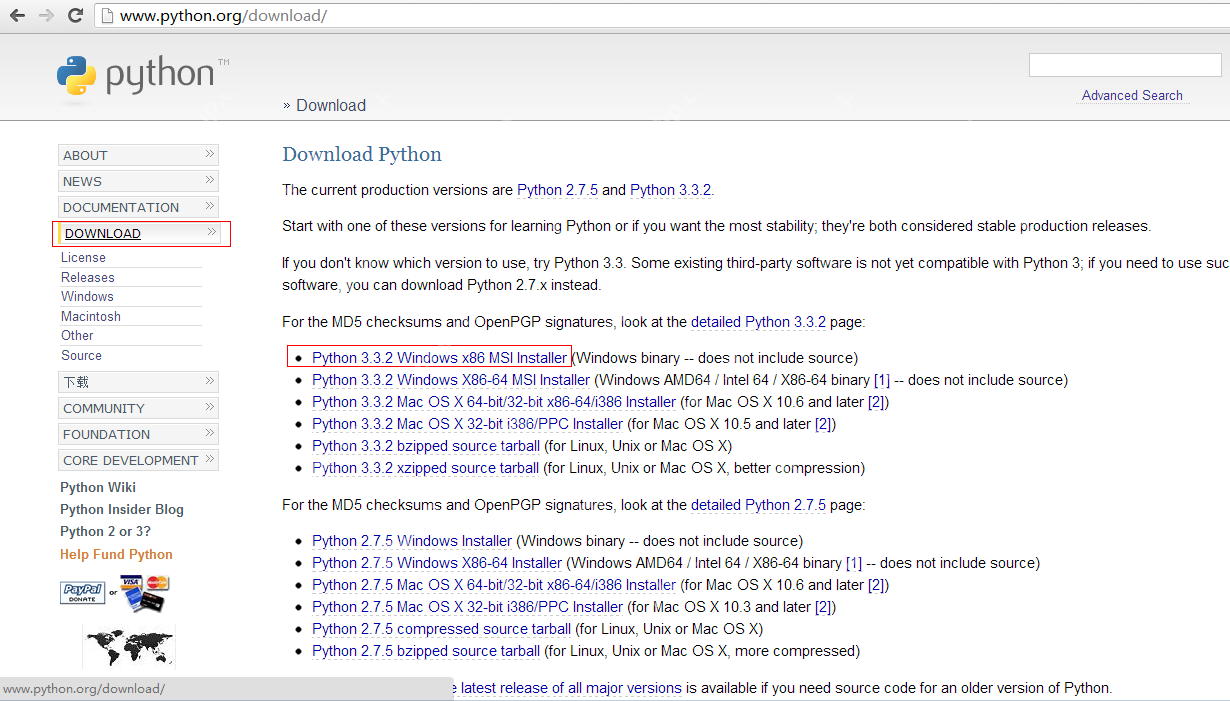 The version I chose is: python-3.3.2.msi
The version I chose is: python-3.3.2.msi
After clicking to download, we will get a python-3.3.2.msi installation package with a size of 19.3 MB.
Step 2 Installation
After downloading the python-3.3.2.msi installation package, double-click the file to start the installation.
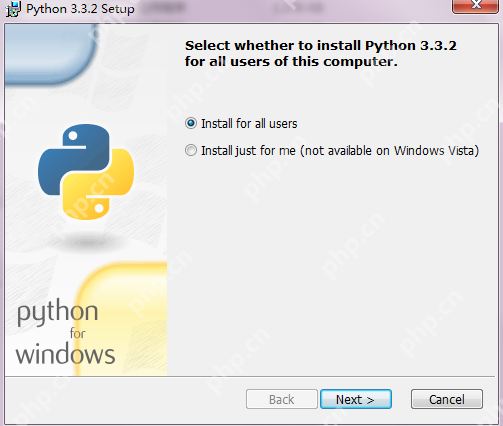
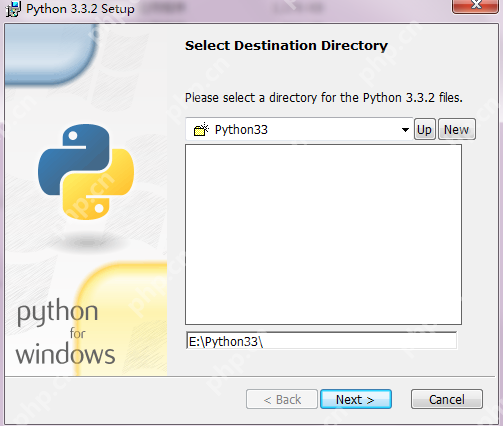 The installation directory I chose is: E:\Python33
The installation directory I chose is: E:\Python33
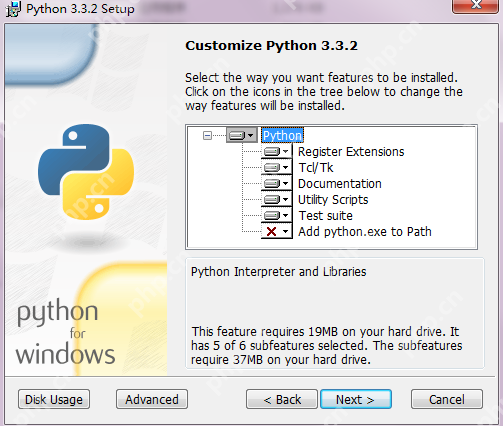 Click Next to start the installation process, which usually takes several minutes.
Click Next to start the installation process, which usually takes several minutes.
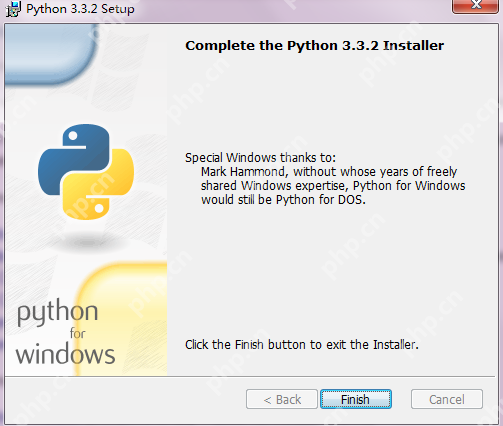 After the installation is completed, click Finish to end the installation.
After the installation is completed, click Finish to end the installation.
Step 3 path settings
Usually, you can use it directly after installing Python. You can check whether you can enter Python's interactive mode by typing Python in the command line.
If you cannot enter, it may be because of the environment variable setting problem and some adjustments are needed.
In Windows, you can add Python's directory to the environment variable path through a command prompt, for example: %path%; C: Python, and press Enter.
Alternatively, you can set environment variables through the graphical interface, the path is: Computer -> Properties -> Advanced System Settings -> Advanced -> Environment Variables.
Step 4 Effect
After the installation is completed, the files in the installation directory are as follows:
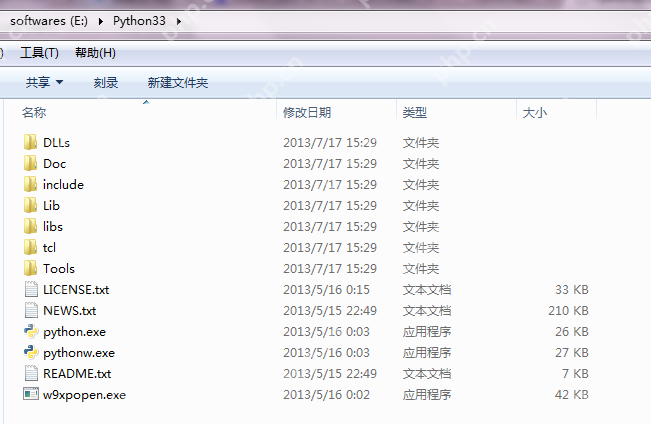
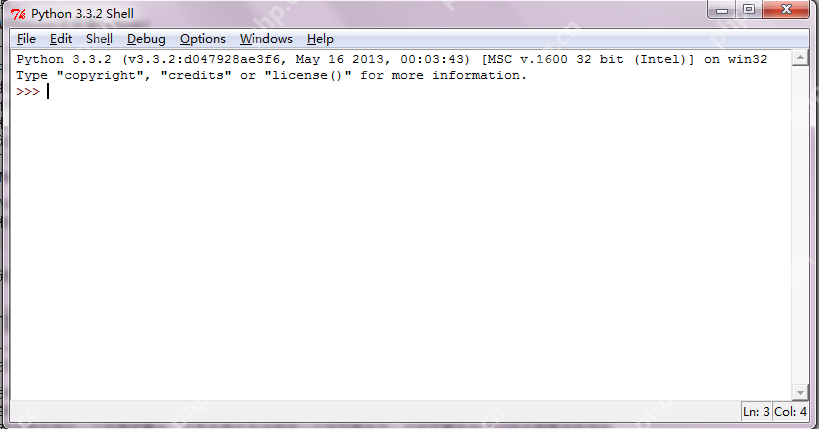 At this point, the Python installation process is completed.
At this point, the Python installation process is completed.
The above is the detailed content of Python development_python installation. For more information, please follow other related articles on the PHP Chinese website!

Hot AI Tools

Undress AI Tool
Undress images for free

Undresser.AI Undress
AI-powered app for creating realistic nude photos

AI Clothes Remover
Online AI tool for removing clothes from photos.

Clothoff.io
AI clothes remover

Video Face Swap
Swap faces in any video effortlessly with our completely free AI face swap tool!

Hot Article

Hot Tools

Notepad++7.3.1
Easy-to-use and free code editor

SublimeText3 Chinese version
Chinese version, very easy to use

Zend Studio 13.0.1
Powerful PHP integrated development environment

Dreamweaver CS6
Visual web development tools

SublimeText3 Mac version
God-level code editing software (SublimeText3)

Hot Topics
 Python for loop over a tuple
Jul 13, 2025 am 02:55 AM
Python for loop over a tuple
Jul 13, 2025 am 02:55 AM
In Python, the method of traversing tuples with for loops includes directly iterating over elements, getting indexes and elements at the same time, and processing nested tuples. 1. Use the for loop directly to access each element in sequence without managing the index; 2. Use enumerate() to get the index and value at the same time. The default index is 0, and the start parameter can also be specified; 3. Nested tuples can be unpacked in the loop, but it is necessary to ensure that the subtuple structure is consistent, otherwise an unpacking error will be raised; in addition, the tuple is immutable and the content cannot be modified in the loop. Unwanted values can be ignored by \_. It is recommended to check whether the tuple is empty before traversing to avoid errors.
 How to prevent a method from being overridden in Python?
Jul 13, 2025 am 02:56 AM
How to prevent a method from being overridden in Python?
Jul 13, 2025 am 02:56 AM
In Python, although there is no built-in final keyword, it can simulate unsurpassable methods through name rewriting, runtime exceptions, decorators, etc. 1. Use double underscore prefix to trigger name rewriting, making it difficult for subclasses to overwrite methods; 2. judge the caller type in the method and throw an exception to prevent subclass redefinition; 3. Use a custom decorator to mark the method as final, and check it in combination with metaclass or class decorator; 4. The behavior can be encapsulated as property attributes to reduce the possibility of being modified. These methods provide varying degrees of protection, but none of them completely restrict the coverage behavior.
 What is a pure function in Python
Jul 14, 2025 am 12:18 AM
What is a pure function in Python
Jul 14, 2025 am 12:18 AM
Pure functions in Python refer to functions that always return the same output with no side effects given the same input. Its characteristics include: 1. Determinism, that is, the same input always produces the same output; 2. No side effects, that is, no external variables, no input data, and no interaction with the outside world. For example, defadd(a,b):returna b is a pure function because no matter how many times add(2,3) is called, it always returns 5 without changing other content in the program. In contrast, functions that modify global variables or change input parameters are non-pure functions. The advantages of pure functions are: easier to test, more suitable for concurrent execution, cache results to improve performance, and can be well matched with functional programming tools such as map() and filter().
 How to read a JSON file in Python?
Jul 14, 2025 am 02:42 AM
How to read a JSON file in Python?
Jul 14, 2025 am 02:42 AM
Reading JSON files can be implemented in Python through the json module. The specific steps are: use the open() function to open the file, use json.load() to load the content, and the data will be returned in a dictionary or list form; if you process JSON strings, you should use json.loads(). Common problems include file path errors, incorrect JSON format, encoding problems and data type conversion differences. Pay attention to path accuracy, format legality, encoding settings, and mapping of boolean values and null.
 How to Install PHP on Windows
Jul 15, 2025 am 02:46 AM
How to Install PHP on Windows
Jul 15, 2025 am 02:46 AM
The key steps to install PHP on Windows include: 1. Download the appropriate PHP version and decompress it. It is recommended to use ThreadSafe version with Apache or NonThreadSafe version with Nginx; 2. Configure the php.ini file and rename php.ini-development or php.ini-production to php.ini; 3. Add the PHP path to the system environment variable Path for command line use; 4. Test whether PHP is installed successfully, execute php-v through the command line and run the built-in server to test the parsing capabilities; 5. If you use Apache, you need to configure P in httpd.conf
 Python for loop range
Jul 14, 2025 am 02:47 AM
Python for loop range
Jul 14, 2025 am 02:47 AM
In Python, using a for loop with the range() function is a common way to control the number of loops. 1. Use when you know the number of loops or need to access elements by index; 2. Range(stop) from 0 to stop-1, range(start,stop) from start to stop-1, range(start,stop) adds step size; 3. Note that range does not contain the end value, and returns iterable objects instead of lists in Python 3; 4. You can convert to a list through list(range()), and use negative step size in reverse order.
 How to use the `shutdown` command
Jul 15, 2025 am 12:26 AM
How to use the `shutdown` command
Jul 15, 2025 am 12:26 AM
The shutdown command of Linux/macOS can be shut down, restarted, and timed operations through parameters. 1. Turn off the machine immediately and use sudoshutdownnow or -h/-P parameters; 2. Use the time or specific time point for the shutdown, cancel the use of -c; 3. Use the -r parameters to restart, support timed restart; 4. Pay attention to the need for sudo permissions, be cautious in remote operation, and avoid data loss.
 How to iterate over a string in Python
Jul 14, 2025 am 02:04 AM
How to iterate over a string in Python
Jul 14, 2025 am 02:04 AM
There are many ways to traverse strings in Python, depending on the requirements. First, using a for loop, you can directly access characters one by one: s="hello", forcharins:print(char), and each character will be output in turn. Secondly, if you need index information, you can combine the enumerate() function: s="hello", forindex,charinenumerate(s):print(f"Position{index}:{char}"), so as to obtain the characters and their positions at the same time. In addition, list comprehension is suitable for batch processing of characters






